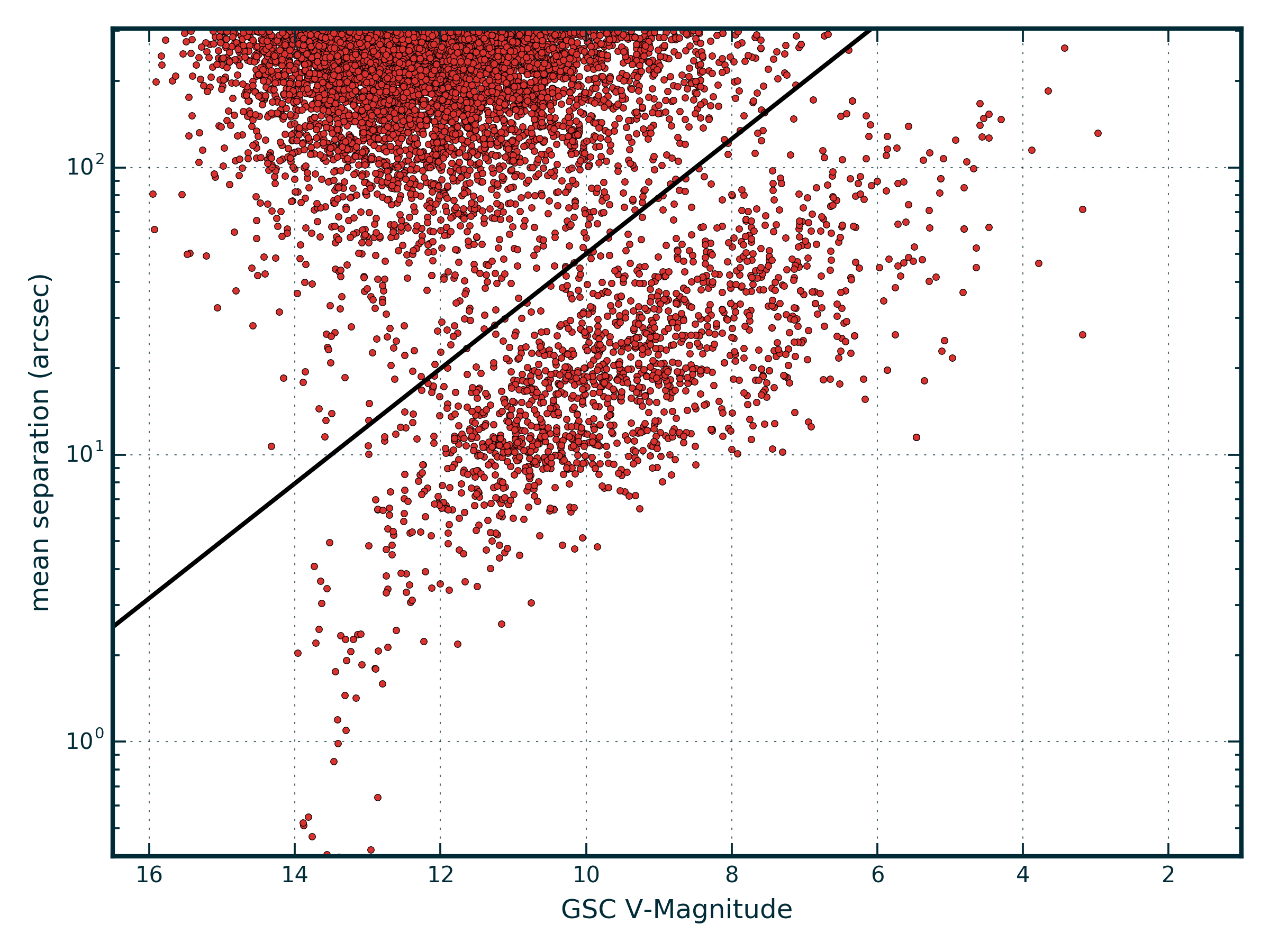Stars saturate and bleed across many image pixels at the brighter end of the magnitude distribution. This can become an issue when it comes to correctly crossmatching and classifying these sources as image subtraction routines fail to difference the sources cleanly, resulting in a multiple artifacts being injected into the transient alert stream. Generally speaking, artefacts spread outward over a greater area from the source’s true centre the brighter the star is.
How can we compensate for this in Sherlock’s crossmatching algorithms so as to mitigate the flood of false-positive transient alerts generated by these bright stars? The solution we landed on is to generate a pseudo-bright-star mask that scales with the catalogued source brightness.
Investigation
To generate a dataset to use for my investigations I did some crossmatching to extract out a bunch of ATLAS difference detections that are likely associated with bright stars in the Guide-Star Catalogue. The query took all GSC stars brighter than \(V=16\), crossmatched all ATLAS difference detections within 5 arcmin and calculated the mean angular separation of the matched sets for each star.
Plotting the mean-separation vs GSC magnitude reveals a clear population of ‘transients’ resulting from bright star difference artefacts (the clustered at the bottom of the plot) and those probably resulting from matching non-associated sources as the separation increases (top cluster). The saturation limit for ATLAS is reported as \(r \sim 12.5\), which is in general agreement with the artefact cluster in this plot as you see matching straying above \(3''\) at around this limit.

It’s clear there’s some overlap between these populations so whatever line we draw between the two populations in magnitude/separation space will result in some contamination of mismatched sources in our selected bright-star population and visa-versa. From our experience of eye-balling many transient candidates, the trade-off between wading through thousands of false-positive transients to find a handful of real transients and saving hours of work by automatically trashing parking many more bright-star artefacts but sacrificing these few real transients is definitely worth it.
With this in mind we’ve settled on using the inequality for matching ‘transients’ against catalogued bright-stars (visualised in the plot below):
\[separation < 10^{3.7-0.2 \times mag}\]

Adding The Bright Star Matcher into A Sherlock Search
To add a bright-star match into a Sherlock search algorithm, add the following settings to a point-source search module (SDSS in this example):
sdss star:
database table: tcs_view_star_sdss_photo_stars_galaxies_dr12
mag column: _r
bright:
mag limit: 16.
angular radius arcsec: 100.0
synonym: VS
association: BS
...
This search requests that Sherlock switch on the bright-star check for point-sources brighter than \(r=16^{th}\), using an initial sweep radius of \(100.0''\). Matches collected in the initial sweep are then matched using the magnitude-separation inequality above and positive matches given the appropriately named ‘BS’ classification.
